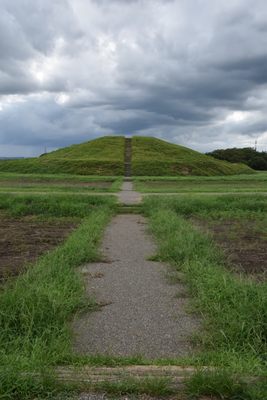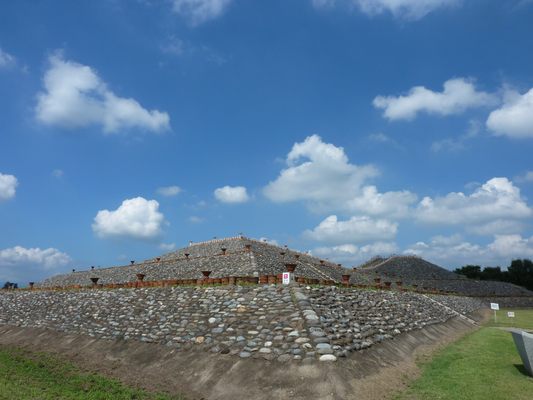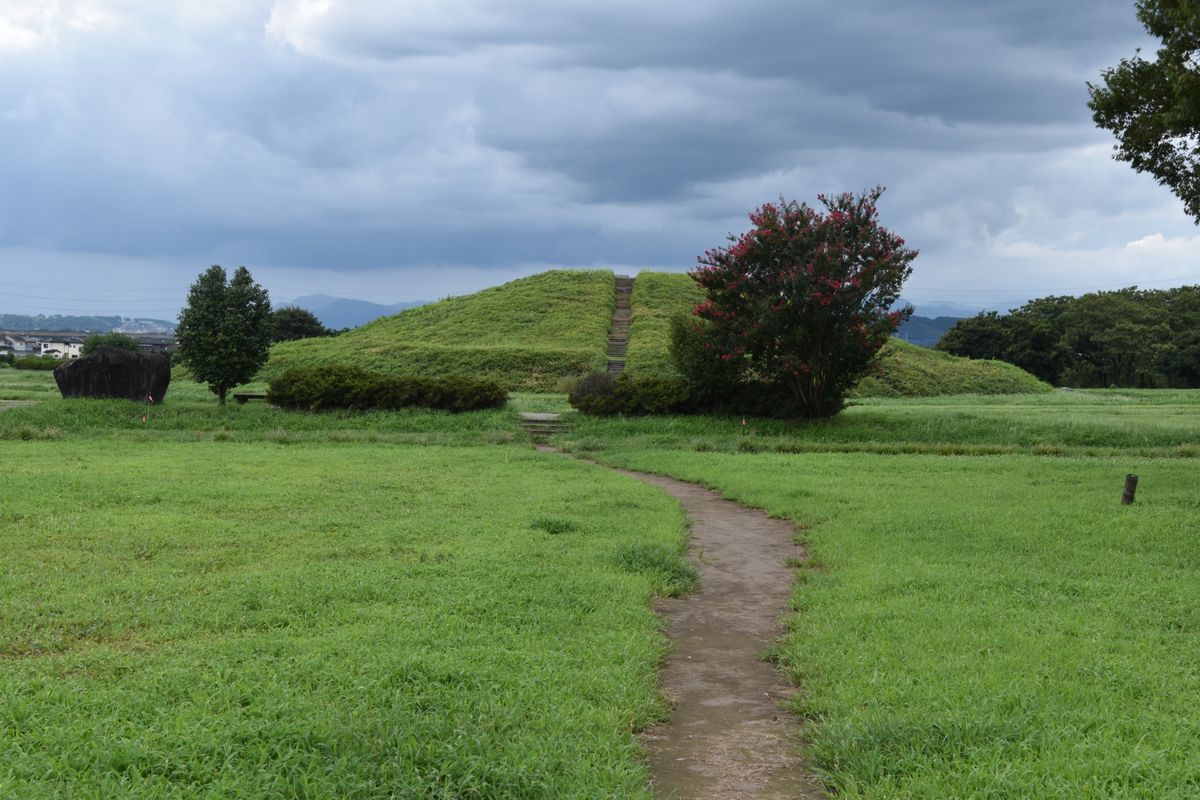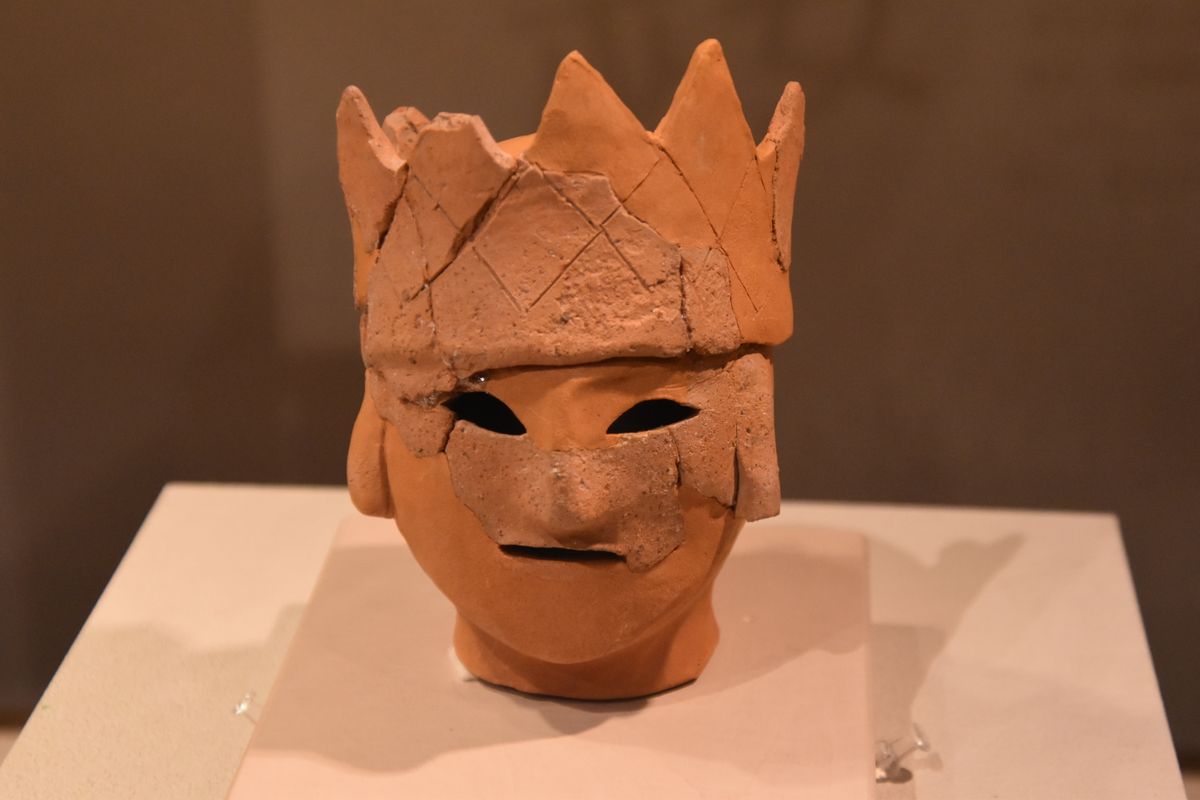About
In Japanese archaeology, the term kofun refers to ancient burial mounds typically dating between the third and seventh centuries. While it’s been estimated that there are over 160,000 kofun across Japan (with 700 in Tokyo alone), they’re often difficult to spot as most of them appear to be mere mounds of earth.
The burial mounds of the Hodota (or Hotoda) site in souther Gunma, on the other hand, are massive and impressive. These mounds were blanketed by thick layers of volcanic ash when the nearby Mount Haruna erupted in the sixth century, preserved and naturally concealed until their discovery in the 1800s.
Belonging to the type of kofun called zenpō-kōen-fun, all three Hodota burial mounds are keyhole-shaped and to a degree resemble Meso-American pyramids, if not nearly as huge as Teotihuacán or Chichén Itzá.
Futagoyama Kofun, the largest of the three, is about 108 meters (118 yards) in length and 10 meters (32.8 feet) in height. Yakushizuka Kofun, the second mound, is now part of Saikō-ji Temple, with only a small portion of it visible today. Hachiman-zuka Kofun was excavated with a huge hoard of roofing stones and haniwa, terracotta figurines unique to the Kofun period culture.
The haniwa is diverse in shapes and sizes, often depicting armored warriors and priestesses, horses and even houses, offering tangible snapshots of everyday life in early medieval Japan. Today, replicas of such figurines surround the Hodota complex en masse, some bearing shields as if to protect their king’s tomb, while the real finds from the site can be viewed at the adjacent Kamitsukeno-sato Museum of Archaeology.
Related Tags
Know Before You Go
To get to the archaeological complex, first get to Takasaki Station (an hour or two away from central Tokyo). From the station, take a bus towards Shibukawa at Terminal 5 (every 30 minutes), get off at Mitsudera bus stop (a 30-40 minutes’ ride), and walk for 20 minutes.
While the site can be viewed 24/7, you may not be able to climb the mounds after dark. The Kamitsukeno-sato Museum of Archaeology is open every day except Tuesdays from 9:30 AM to 5 PM. Admission is 200 yen; photography is allowed as long as you don’t use flash.
Hidden Japan: Sado Island, Nara & Kyoto
Explore a different side of Japan.
Book NowPublished
July 7, 2020








































































